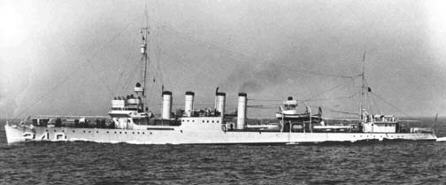|

---- Artillery and Navy ---- |
|
|

---- Artillery and Navy ---- |
|
Most American Artillery was based on designs from World War I. Research of American big guns reveals that money to develop new weapons dried up in 1924. (8 in. Gun, 240 mm, Howitzer) America, trying to lead by example, elected to scrap most development of weapons. Only replacement weapons (and then only under the title of "defense") were procured. However this trend began to change around May, 1940. Money was again available for *New* weapons. Old plans were taken out and dusted off. Work was resumed and Most were considered "Standard" at war's outbreak, only a year and a half later.Anti-Aircraft guns got off to an earlier start. The successful feats of the Army Air Corps such as sinking old battleships and dropping a news paper on the president's yacht (a stunt that so maddened the navy they demanded army aircraft not fly far out over water) may not have convinced the navy, but they did the army. They showed the real need for "Defensive" anti air weapons. Design resumed around 1938. By the end of 1940 most American AA weapons were considered "Standard." (information from U.S. army proving ground Aberdeen, Mn.)
Even though equipment was approved, that didn't always mean it was available. In the Fall of 1940 over 16 million Americans registered for the first Peace time draft in American history. The problem was not where to get the men, but rather, where to put them and how to equip them. There are stories of the 1940 war games in which G.I.'s used broom handles for rifles. The supply and distribution of war materials was created in 1940 and 19410. By the time we were at war most of the problems were ironed out. The system of material supply would continue to grow throughout the war.
The Navy treaties of 1922 and 1932 put limits on the tonnage and type of construction undertaken by the signatures. The ratio referred to the most was 5-5-3, being five of a type for both England and the United States to three of the same type for Japan. America tried to lead by example. We didn't build up to the limits of the treaty until the late '30s. This was a Godsend in that we didn't have outdated material in hand at the outbreak of the war. ---- The Navy ----
Fleet "new construction" between 1925 and 1941 went something like this:
1925 - Two Cruisers, 2 Submarines
1926 - 1927 Six Cruisers
1928 - 1929 Four Cruisers, 1 submarine.
1930 - One Aircraft Carrier, 1 Cruiser 1931 One Cruiser, 8 destroyers, 1 Submarine
1932 - 1933 Two Carriers, 6 Cruisers, 24 Destroyers, 4 Submarines.
1934 - Four Cruisers, 14 Destroyers, 6 Submarines
1935 - One Carrier, 2 Cruisers, 18 Destroyers, 6 Submarines.
1936 - Eleven Destroyers, 6 Submarines.
1937 - One Battleship, 8 Destroyers, 4 submarines.
1938 - One Battleship, 4 Cruisers, 7 Destroyers, 6 Submarines
1939 - One Battleship, 1 Carrier, 8 Destroyers, 8 Submarines
1940 - NINE Battleships, 11 CARRIERS, *6 Battle Cruiser, 46 Cruisers, 196 Destroyers, 72 Submarines.
1941- One Carrier, 2 Cruisers, 15 Destroyers, 50 Destroyer Escorts, 27 Submarines.
*(only only two completed)
We only began to build up to our treaty limits after Germany, Japan, and Italy pulled out of the treaty. The first Battle ship Launched after 1921 was 1940. This was one of the battleships authorized in 1937-38. However, we caught up very quickly. By the start of the war we had 27 Battleships, 6 real Carriers (CV-1 having been converted to a sea plane tender by that time.) 171 Destroyers and 117 Submarines in the fleet. Although some of these ships were outdated, many were upgraded and used throughout the war. Others were sunk in combat, or in accidents. (US Warships of World War II, Silverstone, 1965)It's clear from these lists that America WAS preparing for war in a real way from 1937 onward. Because she was officially Neutral, most of this construction had to be carried on under the Guise of Defense. This was done more for internal American Politics then it was to fool any potential adversary. While a citizen might believe that a new battleship would only be used to defend the shores of the United States, German and Japanese admirals knew only two well the potential of our war preparations.
We were so against war that we nearly missed the whole thing. We tell ourselves that we were dragged into the war but in reality almost everyone knew it was coming...

HomeMilitary
Fire bombing of Japan